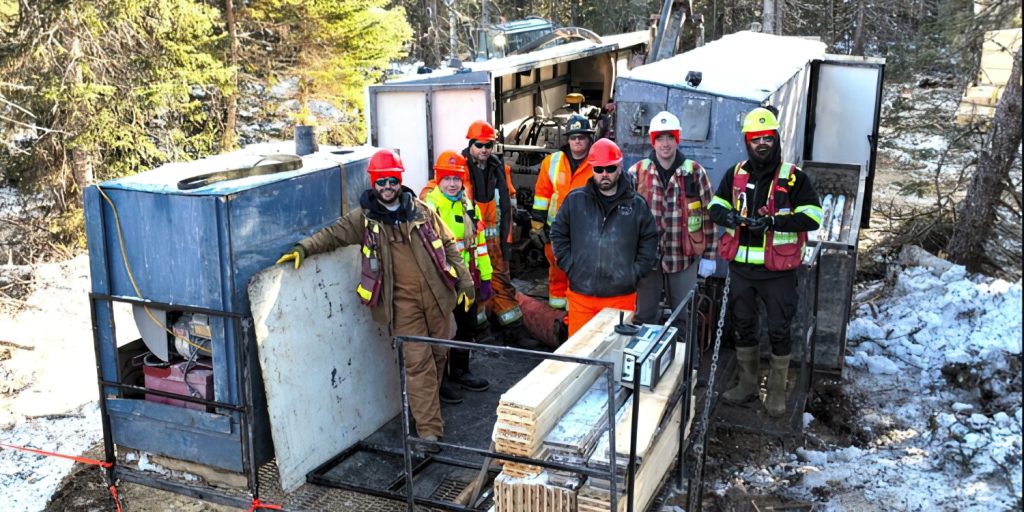Exploits Discovery drills 46.12 g/t gold over 0.40 metres at Bullseye, Newfoundland

Exploits Discovery Corp. [NFLD-CSE; NFLDF-OTCQX; 634-FSE] reported assay results from the final hole completed during phase 1 exploration drilling on its 100%-owned Bullseye property located along the Appleton fault zone (AFZ) in central Newfoundland.
Highlights: Drill hole BE-23-030 encountered several concentrations of quartz veining over its 502-metre length, generating a 46.12 g/t gold assay value from a 0.40-metre core sample.
Several fine grains of Visible Gold were noted within the local veining that contributed to the 46.12 g/t gold screen-metallic assay. This new mineralization was intersected at a vertical depth of approximately 190 metres below surface and remains open in all directions.
Assay results from all 30 drill holes completed during the 11,292 metre Phase-1 drilling campaign have been received and publicly reported.
The design of Phase 2 drilling program has commenced at Bullseye focusing on expansion of the “Horseshoe” gold zone discovery; possible extension of New Found Gold’s (“NFG”) Everest gold discovery onto Bullseye South; extension of NFG’s Jackpot gold discovery on Bullseye South. Information obtained through the upcoming results of NFG’s regional seismic survey shall be incorporated into Exploits’ interpretation; and assess west side of the Appleton Fault (similar to Keats West) as well as further east of Bullseye.
Jeff Swinoga, President and CEO, commented, “We are very pleased that our initial drilling campaign at Bullseye resulted in our first high-grade discovery called the Horseshoe gold zone. We have also been successful in identifying at least two new high-grade areas of gold mineralization beyond Horseshoe. These two new areas generated double digit gold assays in hole 28 and 30. We believe there is definitely more gold at Bullseye to discover. Our all-local and talented team, based in Gander NL, is excited by the numerous opportunities identified by our first successful drilling program at Bullseye. Equally, we are looking forward to identifying new gold targets with the data accumulated this summer on our large Gazeebow South, with over 7.4 km along the Appleton Fault.”
Visible gold has been noted within eight drill holes contributing to the locally high-grade intercepts. Several wide intervals of gold mineralization, in the 1.00-3.00 g/t range, are linked to quartz veining with elevated sulphide content.
Effective August 21, 2023, Chris Huggins resigned as director.
In a staking rush on October 20, 2020, the company staked three mineral licenses (31452M, 31453M and 31454M) in Central Newfoundland. The Newfoundland and Labrador Mineral Claims Recorder rejected these license applications. The company has grieved the Mineral Claims Recorder’s rejection of these license applications under the Mineral Act. The hearing was held in June 2023 before the Mineral Rights Adjudication Board. The Adjudication Board ruled against the company. The company plans to appeal to the Supreme Court of Newfoundland and Labrador.
Jeff Swinoga commented, “While we respect the Adjudication Board’s decision, it is important to note as we prepare our appeal that the Adjudication Board and the company agreed that the Company complied in all respects with the Mineral Regulations and the Mineral Act in the staking of these licenses.”
The Bullseye claims were staked by Exploits in September 2022, and are contiguous to the very active targets currently being drilled by both New Found Gold and Labrador Gold. The claims are considered by company geologists to be highly prospective because they directly overlay a 1,200 by 400 metre segment of the Appleton Fault and its related splay structures. Over a dozen exploration drill rigs have been employed by the three companies operating within this structural-stratigraphic setting over the past two years.
